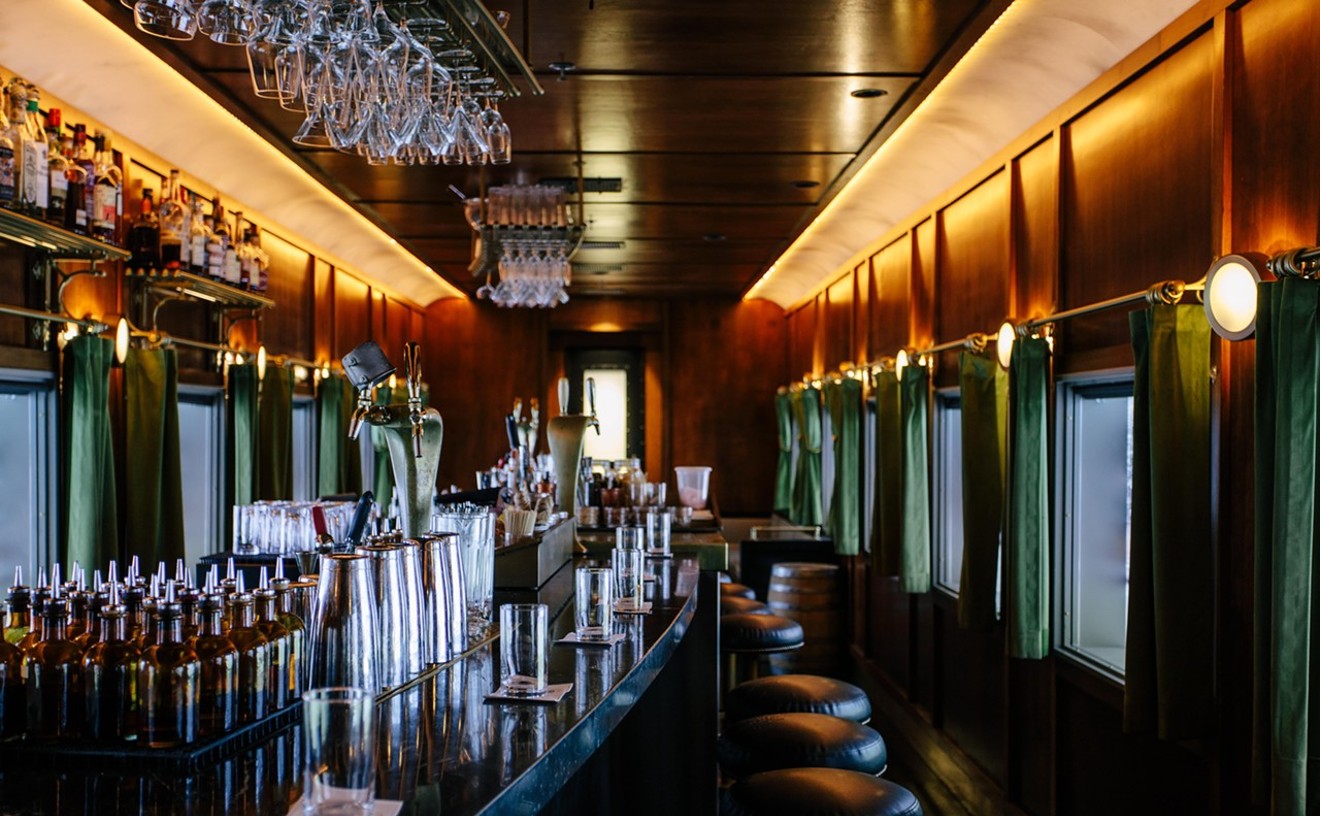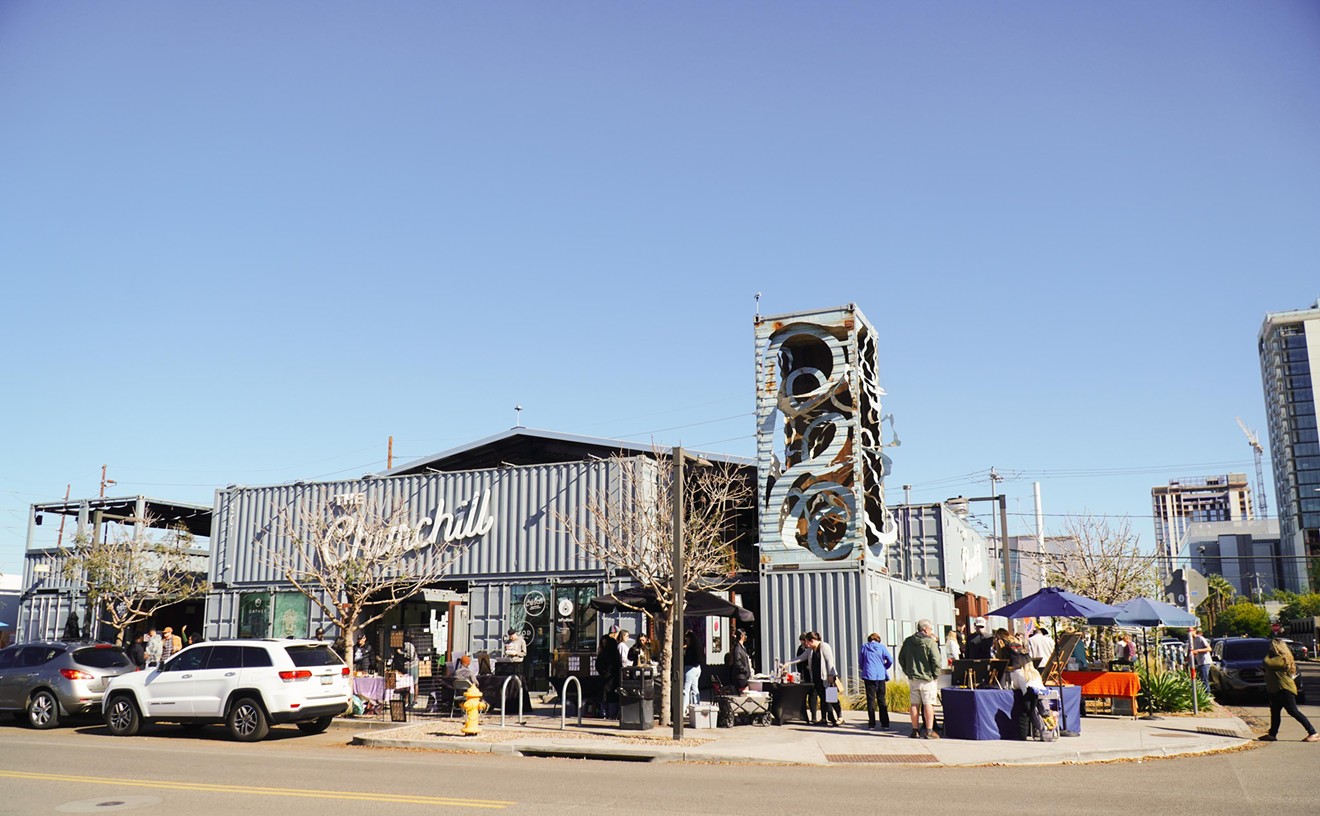I've fallen in love. The waitress rolls a gray, plastic cart up to my table and holds up an egg. As I nod approvingly, she casually cracks the egg into a black earthen bowl of simmering, bright red, spicy soup, in which the egg poaches perfectly in a matter of minutes. You can tell she's done it a thousand times. The beef and kimchi soup is full of soft tofu, giving the broth a silky, thick texture.
For soup lovers, this is as good as it gets, but there's definitely more to Chodang's charm than tableside poached eggs. The combination of spicy, sweet, and briny flavors makes this restaurant's Korean eats instantly addicting. Among aficionados of authentic Korean food in town, Chodang joins the ranks of beloved spots like Café Ga Hyang. Although Chodang's menu is smaller and its hours more limited than those of Café Ga Hyang, the soft tofu soup is the best you'll find in town. And you shouldn't stop there.
Inside a little Chandler building attached to a small apartment complex, the sleek and simple restaurant has rich wood floors and paneling on the walls, modern furniture and fixtures, and large, dark landscape paintings. Seating just 60 people, it's the kind of place where you bring a group of friends to chow down on family-style plates between shots of soju (an intense, clear rice and grain liquor) and sips of OB, a Korean golden lager that pairs nicely with spicy dishes.
The service is fast and friendly, though you can expect a language barrier if you're not up on your Korean. Luckily, there's usually an English-speaking server on weekend nights who's happy to guide you through the menu with explanations and suggestions — even when it's a packed house. And if your server — being sensitive and accommodating to dietary restrictions — doesn't know the answer to a question, he or she will pop into the kitchen to ask.
Aside from its soft tofu soup (if you haven't gotten the hint), Chodang also excels in barbecued meats and big bowls of the Korean-style DIY stir-fry known as bibimbap. Most dishes are priced between $15 and $20, pricier than you'd expect. However, the large portions are meant to be shared and combined. Two dishes easily will serve three diners.
After you've chosen, a cart rolls out with banchan, traditional side dishes that come gratis with nearly everything on the menu: pickled bean sprouts, kimchi, potatoes covered in a sesame sauce, dried seaweed, and more. Each provides unique flavor when added to dishes.
Though it doesn't come with banchan, you should start with a plate of handmade dumplings to share. The delicate pouches of beef, chicken, and such veggies as cabbage are offered both fried and boiled. The fried version has a nice crunch, but it's best to stick with the boiled dumplings, which retain the light sweetness that frying overpowers.
If dumplings aren't your thing, or you seek a lighter option, salad-like dishes of cold arrowroot noodles are a one-of-a-kind treat for healthy eaters. I ordered the chik bibim myung-myun. The dark, black, thin noodles come dressed in a sweet and tangy sauce with fresh greens and veggies. The gluten-free noodles have a tendency to stick together, so they were served with a pair of scissors for easy plating.
If you want to fit in with Chodang diners, go with a large group — a third of the restaurant tables are reserved for parties of six or more. Half the fun of Korean dining comes in ordering several dishes for the table and piling bits of everything onto your own bowl of rice, which you can customize with banchan as you see fit.
This DIY rice bowl method works well with dishes like the osam bulgogi plate of sautéed squid and pork with scallions and onions in a slightly sweet and mostly spicy sauce. Though the squid was tough, it at least was not overcooked and added to the moist, tender slices of pork that slightly funky sea flavor I love in Asian cuisine.
If you don't want squid, the chicken version of the dish, called dak bulgogi, has the same bright red, spicy barbecue sauce, but without the fishy flavor. The marinated chunks of chicken were moist and fatty, adding a richness to the sweet and spicy sauce thanks to the use of dark thigh meat. However, the obvious stand-out barbecue dish is the Chodang galbi, or short ribs. The tender bone-in meat topped with sesame seeds and scallions has a delicate sweetness, without all the goopy sauce the word barbecue typically connotes.
The main event of Korean dining has to be the big, sizzling bowls of bibimbap, which are as much about the auditory, olfactory, and visual presentation as they are about the taste. The bowls come with separate piles of rice, vegetables, and meat with optional raw egg on top. While the bowl is still hot, you quickly mix the ingredients together so the egg cooks thoroughly, kind of like DIY fried rice. Served with a squirt bottle of devilishly hot yet completely addicting red chile paste, bibimbap is good for spice lovers and wimps alike.
There's a lot to love about this modest spot, whether that means mixing up a bowl of bibimbap or picking up tender bone-in short ribs with chopsticks. As far as family-style dining is concerned, Chodang is one of the most unique and satisfying spots for it in town. Just please don't tell pho that I'm cheating.











